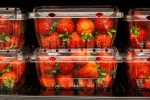
Retail packaging for produce
Part 3 of 3: Consumer buying behavior
To what extent is sustainability and sustainable packaging truly important for consumers? Do consumers actually follow through on what they claim to purchase? What do consumers name as being important, and how do they act in a simulated purchasing situation?
In order to answer these questions, NNZ, market leader in vegetable and fruit packaging, recently conducted a large-scale survey in Germany (more than 300 interviews and 11,700 purchasing stimulations). NNZ conducted the survey using packaging materials for blueberries and strawberries. The initial results of the survey into strawberries and strawberry packaging options were presented and enthusiastically received at the European Packaging Forum in Düsseldorf. We shall be sharing the results of the survey in a series of 3 articles. In part 1 we shared consumer views regarding sustainability and sustainable packaging materials, and checked consumer knowledge on the subject.
In part 2 we shared the results of the survey into the emotional impact of strawberries and the emotional and rational criteria for the purchase of strawberries. In this blog we reveal the results on purchasing simulation with and without price and packaging information.
In the purchasing simulation without price and packaging information, 55% of consumers indicated that their first choice would be the pulp packaging (with flow pack film or top seal film). Furthermore, 30% of the consumers indicated no preference for any of the packaging options, and that they would buy the strawberries anyway, regardless of the packaging. The consumer preferences are illustrated below, in sequence of their first choice.
In the subsequent purchasing simulation, strawberries were offered in a variety of packaging options, including pricing and packaging information. Seeing as 61% of the respondents claimed not to buy products with too much packaging, for ecological reasons, the question is to what extent they actually followed through this claim during the purchasing decision?
From experience, market researchers know that consumers often subconsciously decide differently to their (so-called) thought pattern and ‘rational” expression. As an illustrative example: the toothpaste market would be approximately 3 times its current size if users indeed brushed their teeth as often as they claim to.
The choices made by the consumers during the purchasing simulation were therefore also compared with their earlier claims during the survey. When the choice of packaging deviated significantly from the earlier claims, these results were considered invalid – the respondents were ‘not credible’ – and were removed from the survey.
In purchasing simulations with information on pricing and packaging, the plastic PET packaging options scored higher. The reasons why consumers would buy strawberries in a plastic packaging are the lower price and the transparency.
Transparency makes it possible to check the quality of the strawberries, which is so important! This is the 39% of the consumers who are ‘less green’ and unwilling to accept a higher price for a sustainable packaging. The pulp and cardboard packaging options, on the other hand, meet the requirements of the more environmentally conscious target groups who are willing to pay a higher price.
Key findings of our survey ‘What consumer really want from soft fruit packaging’:
"*" indicates required fields
These cookies are used to optimize performance and functionality of the website. These cookies are not essential when browsing the website. However it is possible certain elements on the website will not function properly without the cookies.
These cookies collect data that we use to understand how our website is used and perceived. These cookies also help us to optimize the website for the best user experience.
These cookies allow ad-networks to monitor your online behaviour so they can display relevant ads based on your interest and online behaviour. These cookies also prevent the same ads from being displayed over and over.











